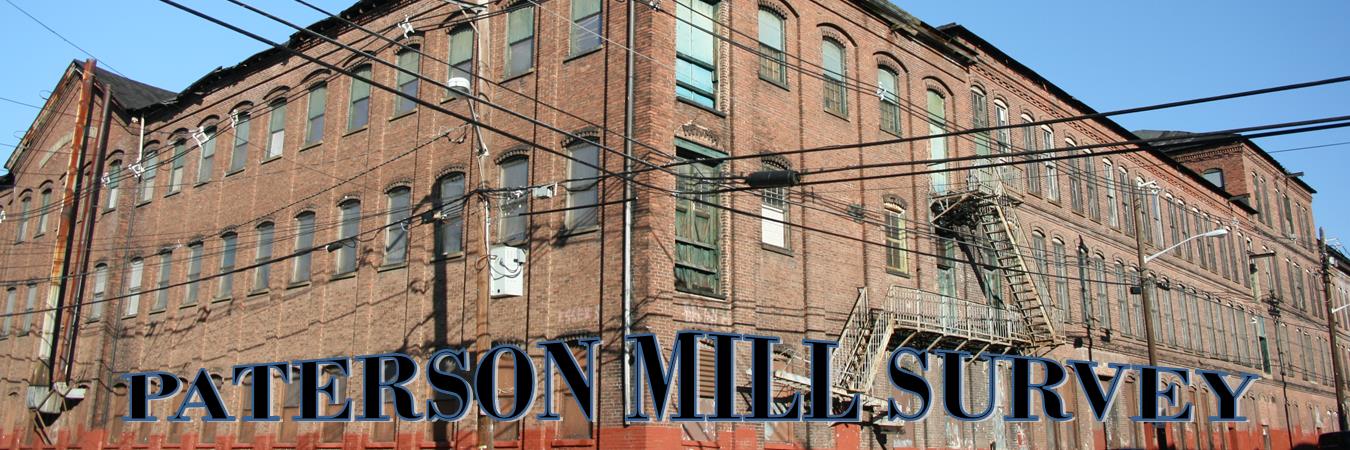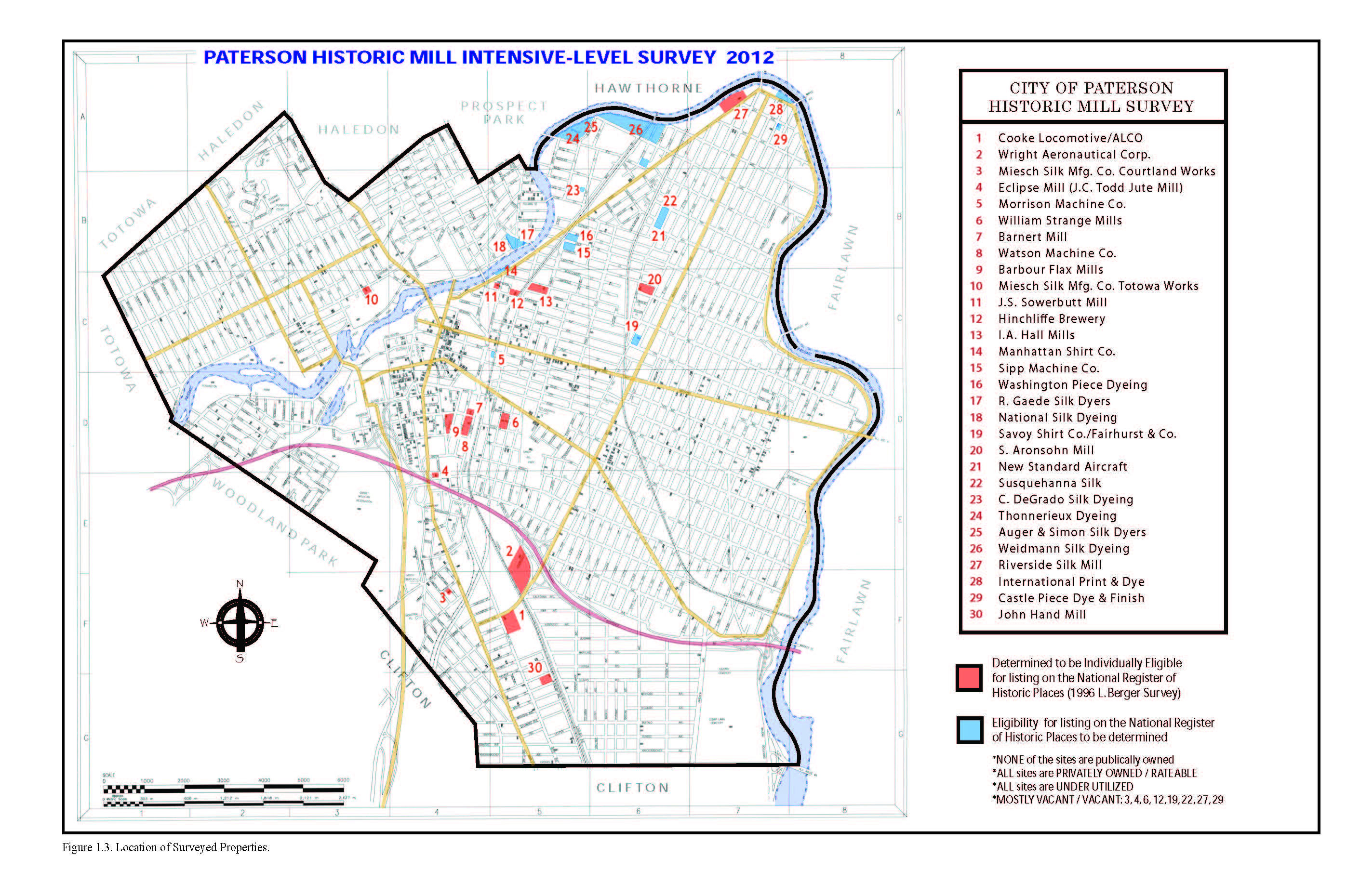Paterson Mill Survey

The "30 mills" survey was initiated by the City of Paterson with the expressed goal of identifying and surveying historic large-scale mills located in parts of the city outside of the Great Falls district. The project was funded by a Certified Local Government Grant-in-Aid from the New Jersey Department of Environmental Protection, Historic Preservation Office (NJHPO). This came in recognition by Mayor Jeffery Jones that these buildings should play an important role in future development plans and that they are an important cultural assets scattered throughout much of the city. In many instances, these large buildings anchor the mixed-use neighborhoods in which they are located. The overarching goal of this survey was to provide data that could be used to guide and promote historic preservation by increasing awareness of these buildings and encouraging their appropriate treatment as historic resources.
This report presents a historic summary placing the mills in historic contexts of industrial architecture and the development of specific industrial sectors including silk, silk dyeing and finishing, machine works, locomotives and aeronautics, which made Paterson known nationally and, in some instance, internationally, for the skill and productivity of its businesses and workers. It also recognizes the mills for the potential significance they may have in association with industrial archaeology and the social history of labor, immigration and ethnicity. The report makes the recommendation that several of these themes are worthy of further exploration and research to answer questions about the degree of direct historic associations with the mills in the survey.
In order to bring immediate recognition to threatened mills, it is recommended that the Paterson Historic Preservation Commission and the City of Paterson move forward with plans to designate buildings to the list of city landmarks that meet the city's Criteria and Procedures for listing. Consideration should be given to providing PHPC staff with the resources to educate owners on appropriate maintenance and preservation treatments that will preserve mills that anchor Paterson's neighborhoods and provide the city with a remarkable sense of place and heritage. Mills identified as significant by this survey should also be considered for targeted assistance through the city's Division of Economic Development and Division of Planning & Zoning. This assistance may take the form of helping owners to identify potential rehabilitation or re-use solutions. In addition, the report recommends that 28 of the 30 mills meet the eligibility criteria of the New Jersey and National Registers of Historic Places. It is suggested that the Multiple Property Documentation Form (MPDF) would be an appropriate approach to nominating the mills and recognizing their significance under the state and federal register acts. The data and context generated for this report can be used as a foundation for preparing the MPDF and reducing the cost associated with the effort. An important advantage of the MPDF approach is that mills listed or determined eligible will become qualified for federal preservation tax credits, which are an incentive for rehabilitation.
Furthermore, it is recommended that the resources identified by this survey be considered for inclusion in industrial heritage tourism, an area of tourism that is growing in the United States and Europe. This could take the form of a guided tour that links industrial sites throughout the city with the Great Falls National Historical Park and its visitor center. This tour would draw visitors into other parts of the city to explore its industrial architecture and aspects of its post-1850 industrial development beyond the waterpower. This tour could be combined with opportunities to experience sites that were associated with the Strike of 1913, as well as neighborhoods with historic and modern ethnic associations. The tour should not only have history but it should offer opportunities to experience the city's living culture, including food, music and art offered in neighborhoods with an industrial past.
Survey Boundaries
Chapter 3: Data Summary / Results of Fieldwork
Chapter 4: Recommendations / Condition Assessments
Listing of Mills
Auger & Simon Silk Dyeing Works
International Print and Dye Works
National Silk Dyeing East Main
The City of Paterson
City of Paterson Historic Preservation Commission
Funded by
State of New Jersey
Department of Environmental Protection
Historic Preservation Office
Historic Preservation Fund
Prepared by:
Alison Haley, M.S.
Patrick Harshbarger, M.A., M.P.A. of HUNTER RESEARCH INC.
With Contributions by:
Gianfranco Archimede, M.S.
Recent News
- Calendar - December 2025Calendar - December 2025
- Zoning Letter Request FormZoning Letter Request Form
- Calendar - August 2024Calendar - July 2024
- Calendar - July 2024Calendar - July 2024
- Underground Railroad Historic Site
Website Launch Party & PresentationClick above for details regarding the Underground Railroad Historic Site
Website Launch Party and Presenta...
